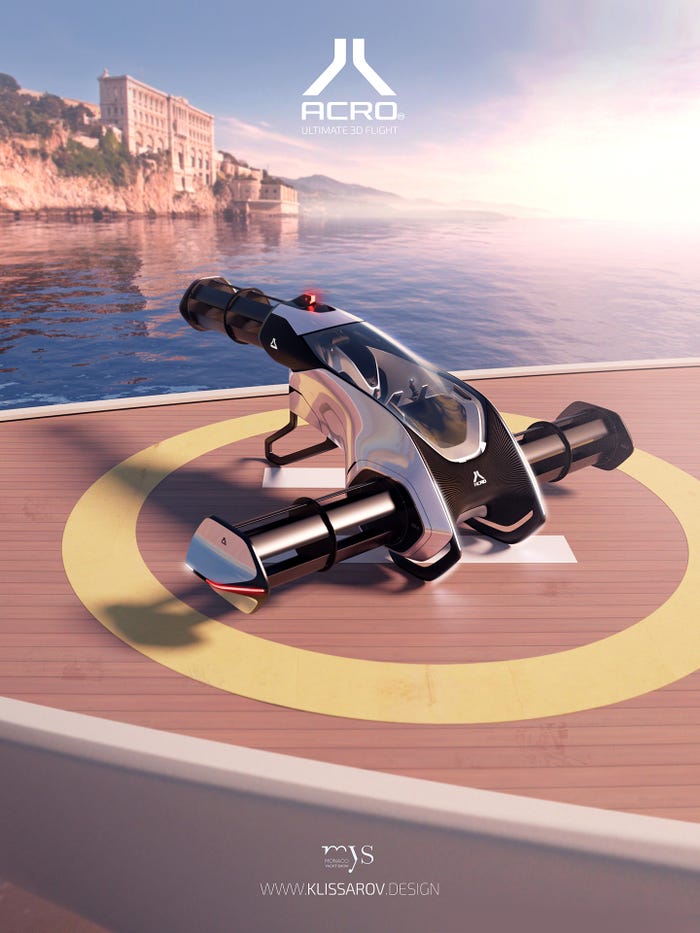Personal Flying Vehicle Designed to Land on YachtsPersonal Flying Vehicle Designed to Land on Yachts
Cyclorotor technology would power the single-person electric aircraft rather than traditional propellers

Designs for an eVTOL (electric vertical takeoff and landing) vehicle that yacht owners could use to take and land from their yachts were introduced this week.
The concept air vehicle from Klissarov Design, a vehicle design studio in France, takes the concept of cyclorotor technology a step further.
CycloTech in Austria recently created an air car by using cyclorotor technology rather than traditional propellers.
The technology allows a vehicle to do sideways and backward flight and mid-air braking without tilting or banking the vehicle.
The propulsion system, developed over the last 10 years by CycloTech, comprised five generations of cyclorotors.
The aviation propulsion system contains several parallel blades rotating around a central rotation axis.
The Klissarov concept vehicle Acro would use that technology for a single-person, light aircraft.
“The vehicle’s propulsion system is based on a cutting-edge cycloidal rotor technology, which allows for full 360-degree thrust vectoring, exceptional maneuverability and stability,” stated the announcement Emmanuel Klissarov sent me.
“This new breed of aircraft will not only provide the ultimate flight enjoyment and safety above the water but also the ability to land on yachts in almost any sea/weather condition,” stated Klissarov. “The very low noise pollution, electrical propulsion system and compact form factor will not require the need for a traditional helipad.”
The design was introduced by Kllissarov during the Monaco Yacht Show.
“I had the opportunity to show it to some clients as well as helicopter operators and manufacturers,” Klissarov told me. “The response was quite positive in the sense that they expressed never have seen anything like that. The design was really well appreciated, and since I back it by relying on CycloTech's technology on the rotors, it is taken more seriously.”

The Acro features would include a ballistic parachute at the top, a structural harness to retain the pilot, helmetless operation, dual joystick operation with no pedals and an integrated deck-in charging at the bottom of the aircraft.
The operator would get in and out from the front of the vehicle, according to Klissarov, a well-known vehicle designer who helped shape the design of vehicles including Renault and Mercedes-Benz.
Flight testing using cyclorotors was recently conducted at a general aviation airport in Austria following regulations of the European Union Aviation Safety Agency (EASA).
That air car, called CruiseUp, contained six rotors and could fly and land safely in the event of a rotor failure, according to CycloTech.
The Klissarov Acro would not require a pilot license under the ultralight category, as defined by the Federal Aviation Administration (FAA).
Like what you've read? For more stories like this on flying cars and emerging technologies, sign up for our free daily email newsletter to stay updated!
Read more about:
Flying CarsAbout the Author
You May Also Like






